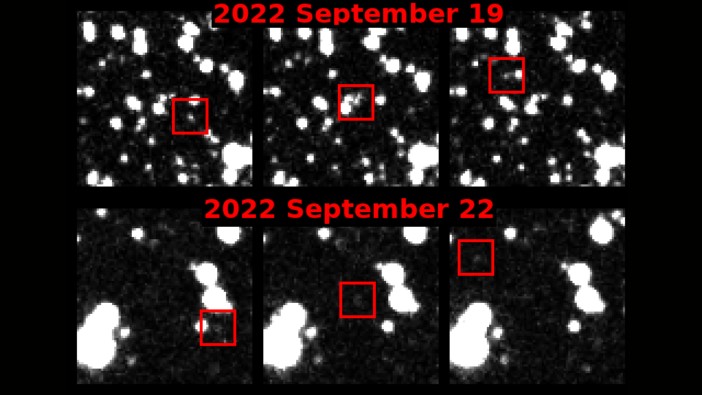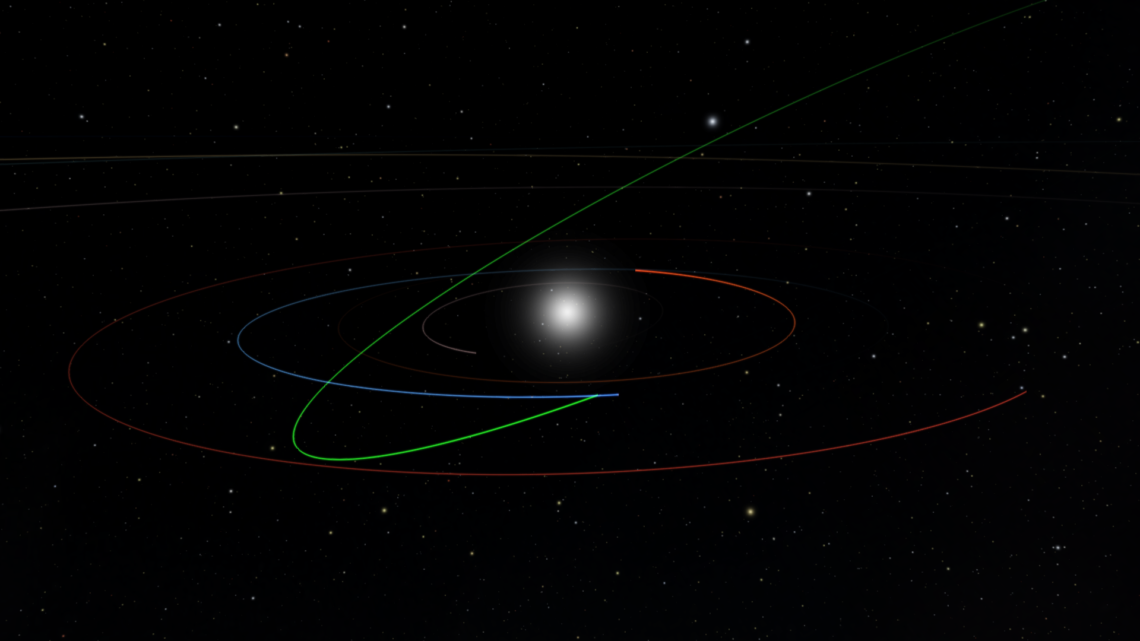'Potentially hazardous' 600-foot asteroid detected near Earth after a year of hiding in plain sight
A skyscraper-size asteroid was revealed in year-old telescope data thanks to a new algorithm that could rock the way near-Earth objects are discovered.

Astronomers have discovered a massive, skyscraper-size asteroid hiding in plain sight near Earth, thanks to a new algorithm designed to hunt the biggest, deadliest space rocks.
The 600-foot-wide (180 meters) asteroid — now officially named 2022 SF289 — is large enough and orbits closely enough to Earth to be considered a potentially hazardous asteroid (PHA) — one of roughly 2,300 similarly classed objects that could cause widespread destruction on Earth should a direct collision occur. (Luckily, there is no risk of collision with this rock at any point in the foreseeable future.)
The asteroid made a close approach to Earth in September 2022, when it flew within about 4.5 million miles (7.2 million kilometers) of our planet, according to NASA. Yet astronomers around the world failed to detect the asteroid in telescope data at any point before, during or after the approach, as the large rock was obscured by Milky Way starlight.
Now, researchers have finally revealed the space rock's existence while testing out a new algorithm that's tailor-made to detect large asteroids from small fragments of data. The detection of a PHA that's too sneaky for traditional methods to spot represents a huge vindication for the algorithm, which will soon be used to comb over data gathered by the Vera C. Rubin Observatory, a cutting-edge telescope in the Chilean mountains scheduled to begin asteroid-hunting operations in early 2025.

"This is just a small taste of what to expect with the Rubin Observatory in less than two years, when [the algorithm] HelioLinc3D will be discovering an object like this every night," Mario Jurić, director of the Institute for Data Intensive Research in Astrophysics and Cosmology at the University of Washington and the team leader behind the new algorithm, said in a statement.
To ensnare their first asteroid, the scientists put their algorithm to the test on archival data from the Asteroid Terrestrial-impact Last Alert System (ATLAS) survey in Hawaii, which takes at least four images of the same spot of the sky every night. The search revealed something that ATLAS had missed: a large asteroid, visible in three separate sky images taken on Sept. 19, 2022, and the three following nights.
Sign up for the Live Science daily newsletter now
Get the world’s most fascinating discoveries delivered straight to your inbox.
ATLAS requires that an object appear in four separate images taken on a single night before that object can be considered an asteroid. Because 2022 SF289 did not meet that criteria, the world never knew about its close brush with our planet.
The new HelioLinc3D algorithm, meanwhile, is designed to cobble together asteroid detections from much less data. The Rubin Observatory, for which the algorithm was designed, will scan the sky only twice a night, albeit in much higher detail than most modern observatories, according to the researchers.
The team is confident that 2022 SF289 is just the tip of the asteroid-detecting iceberg for Rubin and the new algorithm. There may be thousands of hidden PHAs circling our planet, awaiting detection — and the team is ready to hunt them down.
"From HelioLinc3D to AI-assisted codes, the next decade of discovery will be a story of advancement in algorithms as much as in new, large, telescopes," Juric said.

Brandon is the space/physics editor at Live Science. His writing has appeared in The Washington Post, Reader's Digest, CBS.com, the Richard Dawkins Foundation website and other outlets. He holds a bachelor's degree in creative writing from the University of Arizona, with minors in journalism and media arts. He enjoys writing most about space, geoscience and the mysteries of the universe.









